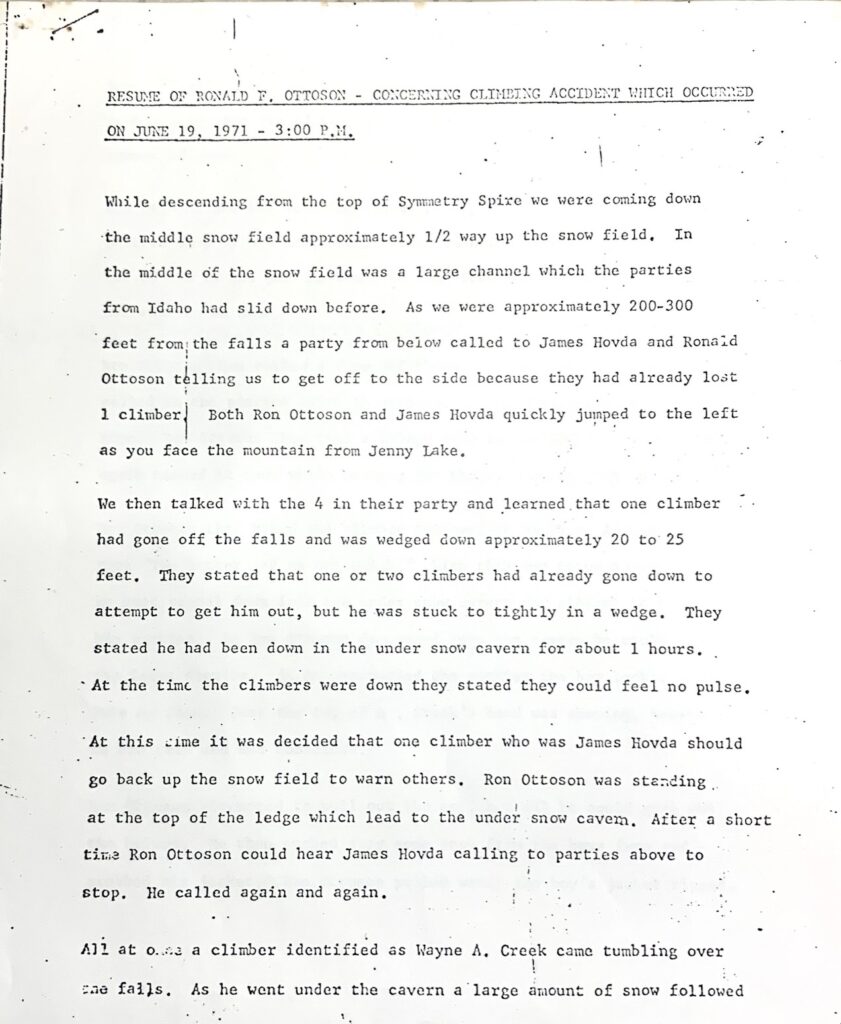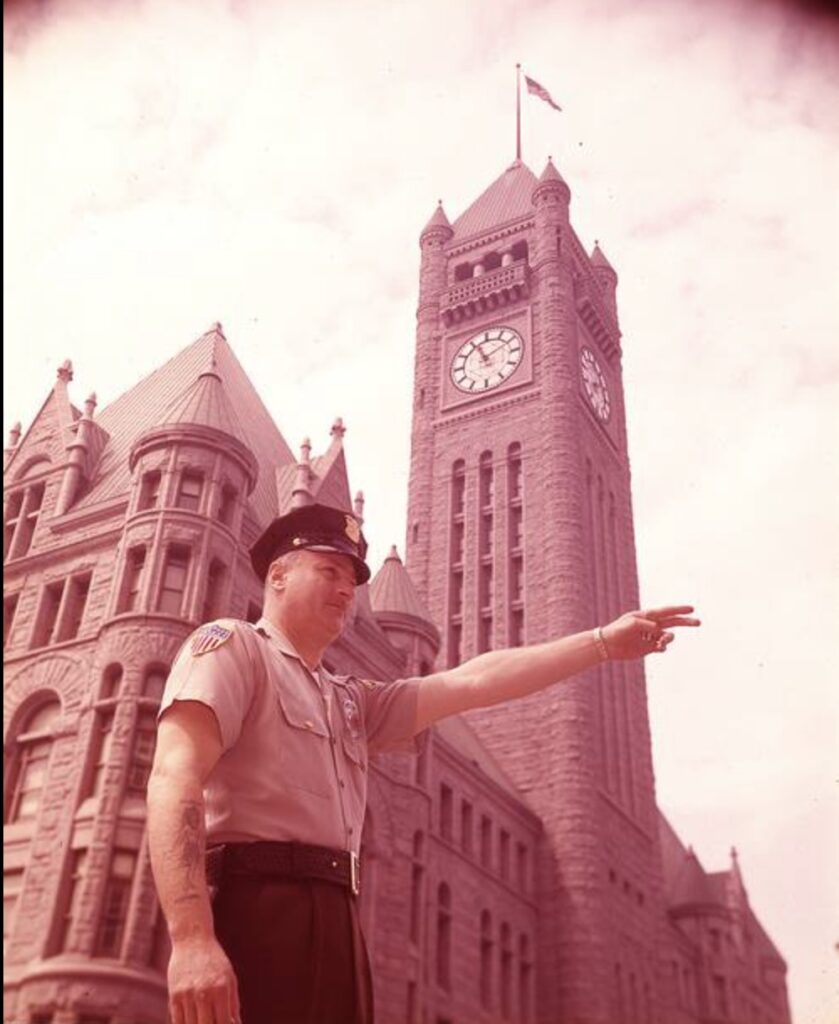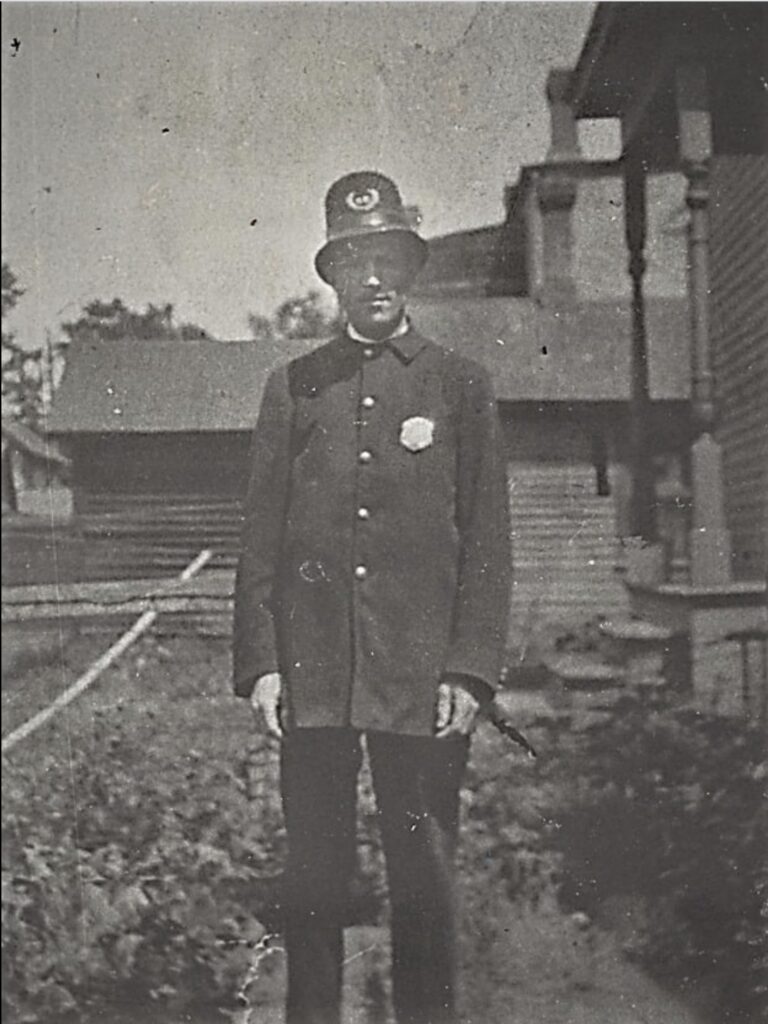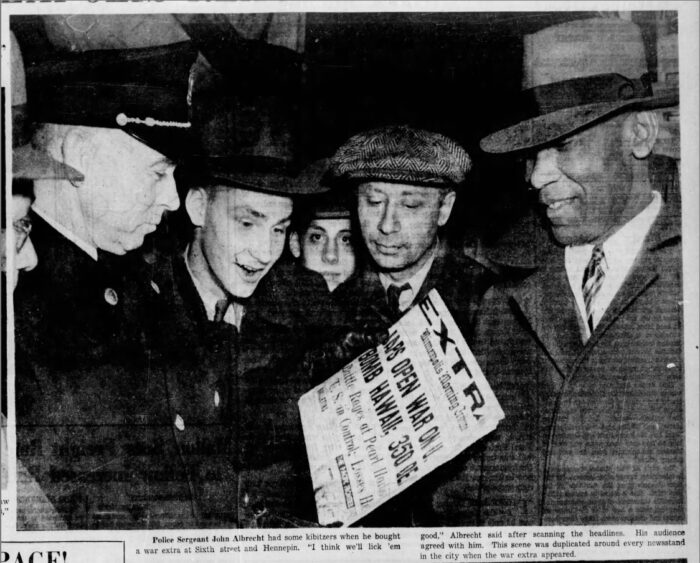For your knowledge and enjoyment, here is a description of the structure of the Minneapolis Police Department from the Annual Edition of the Minneapolis Tribune on January 1, 1890.
The Police Department
The Personnel of the Minneapolis Police Force
“The Police Department of Minneapolis is composed of exactly 200 men, and is as good a department as any city could wish for. The department is under the immediate charge of Superintendent W.M. Brackett, while it is controlled by the police commission composed of Mayor E.C. Babb, W.R. Guile and and N.H. Gjersten. This body has the power of appointing and dismissing men, fixing salaries and other miscellaneous business.
The city is divided into five precincts, to each one of which, with the exception of the Fifth, are assigned a captain, lieutenant, and three sergeants and a detail of men. At the Fifth Precinct there are two sergeants and a detail of man.
The First Precinct embraces the territory bounded by First Avenue North and Eighth Avenue South and the river and Twentieth Street. This is under the charge of Captain D.A. Day, with Lieutenant Thomas Coskran, Sergeants John Leonard, A.H. Volk, and S.A. Kirkham and a detail of 49 men under him. There are also two patrol drivers and two jailers.
The Second Precinct consists of the territory on the east side of the river, and the force consists of Captain William Bosworth, Lieutenant J.S.J. Bean, Sergeants P. Kennedy, William Dunn and Warner Breushaber and a detail of 26 men.
The Third Precinct embraces the territory south of Eighth Avenue South and the force consists of Captain Lewis Ness, Lieutenant Swan Walton, Sergeants Patrick Fox, Henry Krumweide, and W.S. Foster, two patrol drivers and two jailers.
The Fourth Precinct embraces the territory north of First Avenue North. The force here consists of Captain Martin Buerfening, Lieutenant Thomas Nelson, Sergeants John Kennedy, John Norman and James Allen, 24 patrolman, two patrol drivers and two jailers.
The Fifth Precinct embraces the outskirts of the city. The force here consists of Mounted Sergeants F.E. Coffin, Sergeant Charles N. Gustafson, 5 patrolmen and 15 mounted officers. This force is particularly useful in preventing the depredations common in this thinly-settled part of the city.
The force in the difference precincts are divided into three watches, as they are called, each under a sergeant. The day force goes on duty at 7 AM and off at 6 PM. The “6 o’clock watch” then goes on and serves until 4 AM when it goes off duty. The third or “9 o’clock watch” goes on duty at 9 PM and serves until 7 AM when it is relieved by the day force. By this arrangement two-thirds of the police force are on duty from 9 o’clock at night until 4 o’clock in the morning, the time when there is a greater liability for burglaries and other crimes. These watches alternate each month, and during the year each man serves four months on day duty and eight months on night duty. During the day the captain of each precinct is in command of the station, while at night the lieutenant is the commanding officer. Superintendent Brackett is present at police headquarters during the day, while at night the entire force is under the command of Captain Jacob Hein who acts as assistant superintendent. Each night there is a detail of from 4 to 6 men from the day force who are held at the Central Station as a night reserve. The men sleep at the station and are only called upon in case of a fire. In addition to this force there are six inspectors, one license inspector, one sidewalk inspector, one secretary to the superintendent, two clerks, three telephone operators, two janitors, one police matron, Mrs. Paine, and four court officers, all detailed from the regular police force.
At present prisoners are kept at only the First, Third and Fifth Precinct police stations, the Second and Fourth not being provided with jail facilities. All women who are arrested are brought at once to the Central Station and turned over to the care of Mrs. Paine, the police matron. Dr. R.D. Match is police surgeon.
There are 17 patrol boxes, where officers report by telephone at stated times to police headquarters, where a record is kept of the time and place where each man reports. Each man has a stated beat, while the sergeant of each watch makes the rounds of the precinct to see that all men are at their beats.
The total expense of the police department from January 1, 1889 to January 1, 1890 was $193,321.55. The number of arrests made during the year as of December 28 was 6,154.”
From the Minneapolis Tribune Annual Edition of January 1, 1890



























